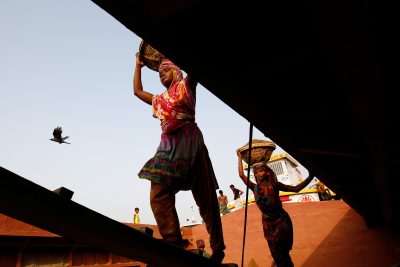Published in East Asia Forum on Thursday, 12 April 2018

Four decades after independence, Bangladesh has now fulfilled the criteria for graduation from the list of Least Developed Countries (LDCs). The economy has been growing at around 6 per cent annually since the 2000s — higher than the average growth rate of the LDCs as a whole. Bangladesh led the way in South Asia in nearing the Millennium Development Goals and is now implementing the Sustainable Development Goals. Successes in the areas of population growth, school enrolments and health have been noteworthy.
In the 1980s, Bangladesh moved away from its planned economic growth model — a model that promoted the nationalisation of industries and financial institutions. Guided by the Bretton Woods Institutions, Bangladesh instead undertook various reform measures under the Structural Adjustment Programme (SAP). These reform measures aimed to achieve macroeconomic stability and accelerate economic growth. They emphasised policy stability and placed importance on acquiring the strength to withstand macroeconomic shocks. Growth and poverty alleviation were also key objectives of SAP.
 Beginning with this modest liberalisation process, the country subsequently initiated comprehensive reform packages with a view to allow a greater role for market forces. Policymakers hoped that this would help the country to develop economic competitiveness and integrate into the global economy. Major political parties from across the political spectrum adopted similar economic policies under the philosophy of open markets and private sector-led development. These policies were consolidated in the 2000s and the country began to settle into its new market-based economy. Sweeping changes were made in the areas of trade and industrial policy, agricultural policy, fiscal and monetary policy and exchange rate management. Safety net development and institutional restructuring were also important points of focus.
Beginning with this modest liberalisation process, the country subsequently initiated comprehensive reform packages with a view to allow a greater role for market forces. Policymakers hoped that this would help the country to develop economic competitiveness and integrate into the global economy. Major political parties from across the political spectrum adopted similar economic policies under the philosophy of open markets and private sector-led development. These policies were consolidated in the 2000s and the country began to settle into its new market-based economy. Sweeping changes were made in the areas of trade and industrial policy, agricultural policy, fiscal and monetary policy and exchange rate management. Safety net development and institutional restructuring were also important points of focus.
Subsequent development strategies built upon these improvements. Policies to support export-led growth gained prominence: the nominal tariff rate, the import-weighted average tariff rate, the implicit nominal tariff rate and the effective rate of protection all went down, as did non-tariff barriers such as quantitative restrictions on imports. These measures were supported by appropriate export promotion measures that aimed to diversify the export market, improve the quality of exports, stimulate higher value-added exports and develop industry for backward linkages. The market-oriented agricultural policy and technological innovation contributed to higher production in the agriculture sector and food self-sufficiency.
Changes in development strategy have transformed Bangladesh’s economy at various levels. It is now one of the fastest growing economies in South Asia. But there are a number of challenges for the country. Despite a decline in the rate of population growth recently, the size of the population is too large to be satisfactorily provided with a reasonable standard of living. Inequality of both income and assets is on the rise despite the decline in poverty. Efforts need to continue towards reducing poverty and solving income and asset inequality. Despite high GDP growth the gap between top 5 per cent and bottom 5 per cent of the population has increased over 2010– 2016. Governance has also been a growing concern and continues to hinder economic performance.
Possible measures to reduce inequality include increasing public investment for more and better job creation. Besides, higher allocation of funds for social safety net programs is needed for marginalised individuals. Strong and efficient public administration requires institutional reforms for ensuring the implementation of the government’s development programs.
Mobilising resources for higher public expenditure is a challenge since the tax to GDP ratio in Bangladesh is historically very low. Increasing automation as well as human capacity at organisations like the National Board of Revenue will help generate more financial resources.
Another area of reform is the banking sector, which currently suffers from a high number of non-performing loans. Moreover, the central bank is struggling to perform its duties and take measures against loan defaulters because of political influences that are challenging the bank’s independence. This calls for setting up an independent financial sector reform commission to provide an in-depth and unbiased assessment of the sector and make recommendations for improving the governance of the sector. The role of the watchdog Anti-Corruption Commission has to be strengthened to improve financial transparency.
Thus, in order to maintain growth momentum, Bangladesh must complete its unfulfilled reform agenda to strengthen its institutions and ensure better delivery of services to the country’s people.
Fahmida Khatun is Executive Director at the Centre for Policy Dialogue, Bangladesh.



